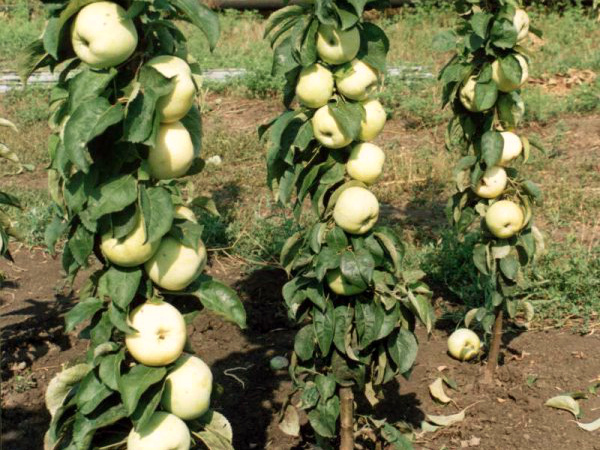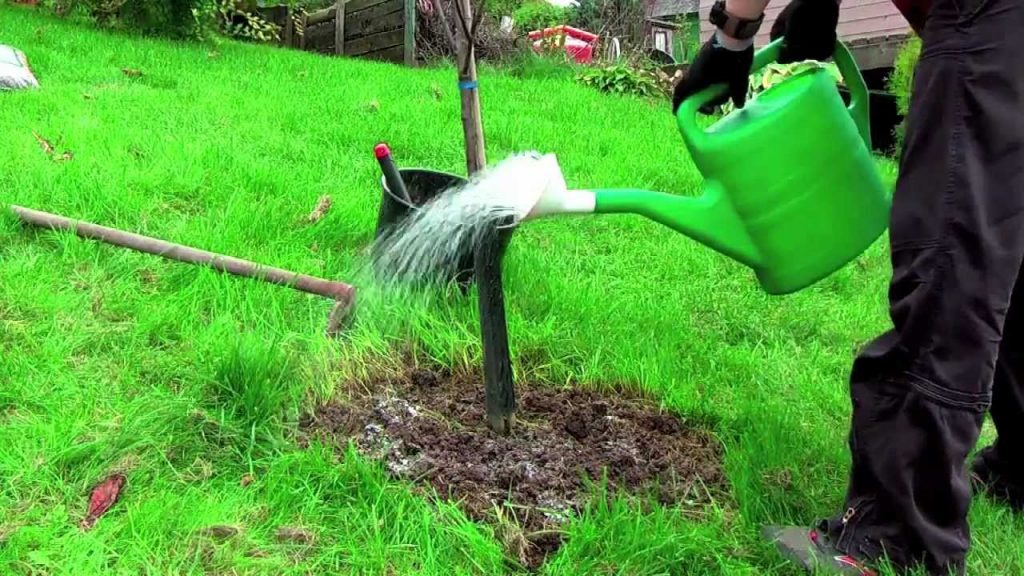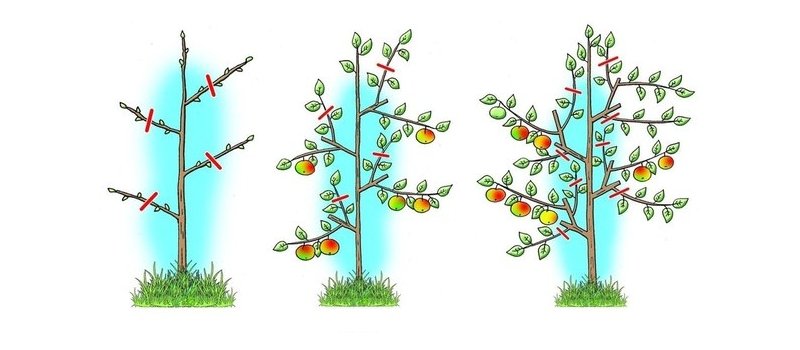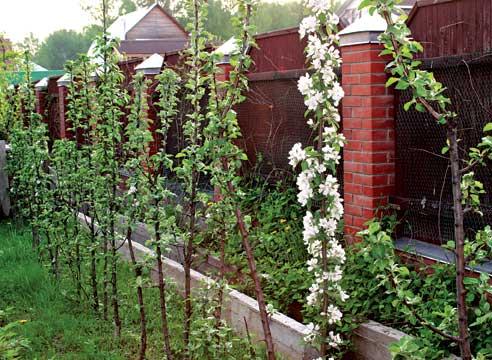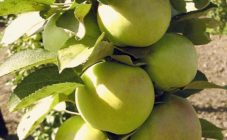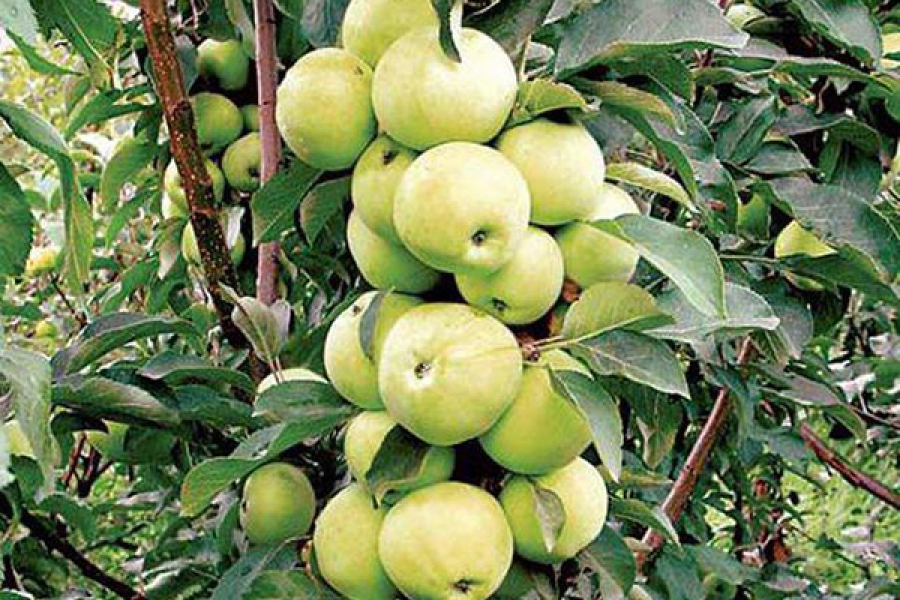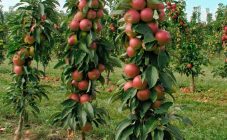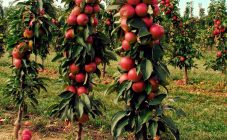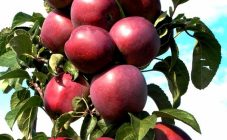Content:
Unlike ordinary apple trees, the columnar variety takes up much less space to ensure its normal development. This is a clone with few or no side branches. Noticing a mutation - an unusually productive branch without side shoots, scientists began to develop a similar trait. Now the cultivation method has spread all over the world. After planting, the plants give their first harvest quite early. In order to choose a similar culture, you need to get acquainted with the characteristics. So the table variety - the columnar apple tree Cascade refers to the late (winter) ripening period. Due to its compact size, it allows you to have several copies of such plants in the garden.
History of creation
The author of the apple tree Kaskad is an employee of the V.N. I. V. Michurin - E. N. Savelyeva. In 2013, tests were carried out, and in 2015 this variety was included in the State Register, recommending it for the Central Black Earth Belt of the Russian Federation.
Cascade, Medoc, Dialogue, President, Currency - these are the best varieties of columnar apple trees for the Middle Lane.
Characteristics and features of the variety
Apple tree Cascade grows to medium size, gives thick straight shoots of brown color with pubescence. Leaves are medium in size, elongated, pointed. They have a smooth matte surface. The tree bears large fruits, weighing up to 200 g. They are slightly flattened, have the correct shape. The peduncle is straight, medium in size. The funnel is not rusty, the main color of the fruit is greenish-yellow, blurred in most parts. The sunny side of the apple has a deep red blush. There are many subcutaneous points.
The apple tree Cascade columnar has a description of taste: juicy pulp, yellowish in color, characterized by aroma, sweet taste with sourness, fine-grained structure. Content of substances:
- sugar - from 10% to 12.5;
- acid - 0.9%;
- vitamin C - 18.5 mg.
According to the tasting assessment, the variety was awarded 4.5 points. The average yield is 278 c / ha. 30 t / ha is obtained when planting 3 by 1.5 m. From the age of six, a columnar tree gives up to 15 kg, which becomes a stable value. Up to this point, the yield increases annually.
The plant begins to bear fruit at 3 or 4 years, is resistant to scab and low temperatures, winter conditions. As a result of the tests, the Cascade variety withstood the temperature - 40 ° C. At the same time, there were no traces of freezing on the bark. Wood and kidneys were damaged only by 1.2 and 0.3 points, respectively. Resistance to soil salinity was also manifested. The apple tree tolerates heat, but not drought. No pollinator is needed, the plant is self-fertile.
The tree reaches 2.5 meters by the age of 10 years. Up to 34% can start bearing fruit in 2 years, and up to 76% in the third. Besides scab, Cascade is resistant to many other diseases. When grown, it does not need to be treated with chemicals. This is the guarantee of an environmentally friendly and safe harvest, which they begin to use in winter and autumn.
Agricultural technology of cultivation
When growing an apple tree, a number of features are taken into account:
- Planting is carried out like ordinary trees. But the distance between the plants is less, 0.9 m, since the tree hardly grows wide. They dig shallow pits into which fertilizers are applied:
- up to 80 g of potash;
- up to 100 g of superphosphate.
Immediately after planting, the tree is watered abundantly.
- The early maturity characteristic of the columnar apple can be achieved by observing the rules of care. The following actions are required:
- Regular watering and feeding. It is preferable to moisten the earth with a drip method. But, if this is not possible, water it 2 to 3 times weekly. On a monthly basis (or 2 times a month), the barrel is also subjected to the drenching procedure;
- Many inflorescences (apple blossom) appear in the first year. But they are recommended to be removed so that a sufficiently strong trunk can form. Already in the second year, you can get a harvest;
- Cereals or spices are sown on the trunks, which are cut from time to time. This trick is taken in order to ward off harmful insects from the apple tree.
About landing
It is recommended to plant the crop in the spring if the grower has time before the buds begin to open. In warm weather between September and October, you can also place the seedling in the ground. The material should be bought one-year, as the survival rate is higher. The roots must be of high quality, not overdried. It is preferable to choose a plant in a container, it can be planted in summer. A sunny place protected from the wind is chosen. The soil needs nutritious and well-drained soil; groundwater should be at a depth of 2 meters or more.
About leaving
In the spring, before the buds open, pruning and preventive treatment against pests and diseases are done. Fertilizers containing nitrogen are also applied. Watering needs timely, as well as loosening. Instead of mulching, they do tinning - planting herbs (siderates) with regular mowing. The following care is performed according to the seasons:
- By mid-June, a complex top dressing is introduced - mineral fertilizers;
- Regular watering is necessary, since columnar crops do not have a taproot going down;
- Inspections are required for detecting diseases or pests, taking measures;
- Any processing is stopped one month before harvest;
- Since August, only potash fertilizers have been applied;
- After harvesting, the soil is fertilized and the tree is treated against insects and fungi. Both in spring and in autumn, Nitrofen is used, 1% Bordeaux liquid;
- Sanitary pruning in the fall is done if necessary;
- In preparation for winter, the plant is covered with spruce branches, wood shavings.
Advantages and disadvantages of the variety
The following advantages of columnar apple trees are known, to which the Cascade belongs:
- The crown has a compact size, up to 2.5 m in height, about 0.5 meters in width. For comparison, the Carmelita apple tree grows up to 1.5 m;
- You can plant many more trees on the site than ordinary apple trees with a spreading crown;
- Designers use culture quite widely to decorate the garden. So the columnar apple tree of the Carmelita variety has an unusually beautiful rich pink flowering;
- The tree can grow in a container, not just outdoors;
- Self-fertility;
- Fairly quick entry into fruiting;
- Significant yield;
- Frost resistance;
- Scab resistance;
- Easy, convenient care, as well as handling, pruning, harvesting.
The culture is not without flaws:
- Low resistance to drought;
- Saplings are not cheap;
- The yield will be stable only up to the age of 16;
- In the absence of moisture and feeding, the yield is significantly reduced.
Obviously, such an apple tree is not too demanding to care for. If you pay enough attention to it, it will reward you with a rich harvest. Especially varieties of columnar apple trees intended for the middle lane will be appropriate in small gardens.

